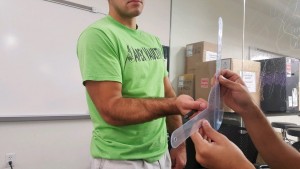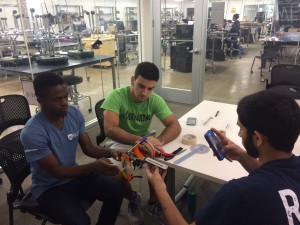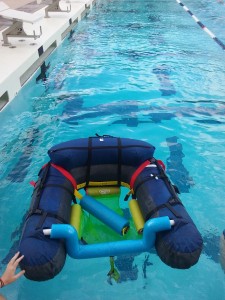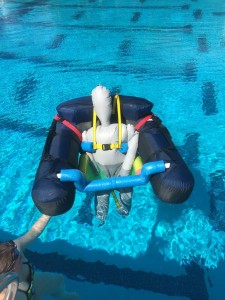At this last weekend we improved a lot in the Anteater Project, from our book camp. We completed all the steps that were still missing from the week before. After brainstorming, scoring and screening matrixes, we defined our best solution and we started creating low fidelity prototype with cheap and easy access materials at the OEDK. Prototyping and testing was definitely the best part for our group, because we could start building our enrichment device for the anteaters and make our ideas became a solid prototype. We iterated until becoming with the final prototype (image below) and presented to all the other groups.
The final prototype is made by a transparent plastic box, with black/grey straps in the top. The bottom part, consists in a laser cut wood maze. In this final prototype, we came up with this features ideas of using a maze and straps, because that way when the anteaters are going to use the device, they will be able to stimulate the use of their clowns and tongue. Which is a good psychological and natural behavior stimulation.
In the end of the week, we finally got our main project teams, that we will work until the end of the SEED program
I will be working in a project continuation from the spring semester ENGI 120, that requires to build a floatation device for a 17 years old boy, Liam Smith, that has Cerebral Palsy.
My group consists in 3 persons: me, Gigi Rills and Allie. We spent the rest of the week doing research and reading about our project, which was really helpful to fully understand our project aspects and having a good background of the problem. We came up with possible solutions, existing solutions and solutions that didn’t work. The documentation of the ENGI 120 group was great, especially for me to understand better about Liam. I hope we will do a great job and make a Swimming device for him that works perfectly and will be safe.




















